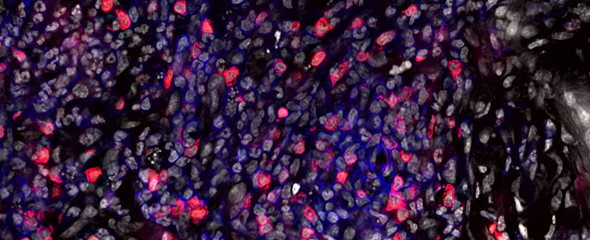"Nitric oxide has two very different effects during an infection: On the one hand, it can directly destroy pathogens that have been taken up by phagocytes. On the other hand, above a certain concentration, it prevents the recruitment of further phagocytes to the site of infection, thus preventing unnecessary tissue damage that would be caused by an excessive immune response," says Andreas Müller, the study's final author. Using the example of Leishmania major, the causative agent of a tropical disease that has so far been difficult to treat, the research group measured and modeled the two modes of action of nitric oxide over the entire course of an immune response.
The scientists were able to show that the direct destruction of the pathogen by nitric oxide is the most important defense mechanism of the immune system against Leishmania major during a relatively short period of time. "Instead, nitric oxide is much more effective at preventing the phagocytes in which Leishmania major can proliferate from reaching the site of infection. Because it inhibits the recruitment of these phagocytes, it deprives the pathogen of the basis for multiplication," says Müller.
For their experiments, the scientists have developed their own measuring system in order to be able to determine the growth rate and viability of the pathogens during infection. "Using so-called intravital 2-photon microscopy, we were able to observe the pathogens in living tissue during infection and measure their proliferation or destruction by the immune system. The data thus obtained were used to test the predictions of mathematical models we had made of how the immune system works, and these predictions matched our data exactly." With this better understanding of the interplay between the various mechanisms of immune defense, Müller says, it is now possible to intervene specifically in the regulation of the immune system and thus develop new treatment approaches in the fight against infectious diseases.
The research work benefited significantly from the research facilities and technologies of the Magdeburg immunology site established in Collaborative Research Center 854. In addition, it is the result of an interdisciplinary collaboration with the working group of Prof Michael Meyer-Hermann from the Helmholtz Centre for Infection Research (HZI) in Braunschweig and with Dr Philippe Bousso and Prof Gerald Späth from the Institute Pasteur in Paris.
Since 2013, Andreas Müller, a biologist, has headed the Intravital Microscopy of Infection and Immunity research group at the Institute of Molecular and Clinical Immunology at Otto von Guericke University Magdeburg and the HZI in Braunschweig. In his studies, he investigates how the growth of pathogens and the immune system influence each other. For his research, he was awarded one of the coveted ERC Starting Grants of the European Research Council in 2016.
Original publication:
Pauline Formaglio*, Mohamad Alabdullah*, Anastasios Siokis, Juliane Handschuh, Ina Sauerland, Yan Fu, Anna Krone, Patricia Gintschel, Juliane Stettin, Sandrina Heyde, Juliane Mohr, Lars Philipsen, Anja Schröder, Philippe A. Robert, Gang Zhao, Sahamoddin Khailaie, Anne Dudeck, Jessica Bertrand, Gerald F. Späth, Sascha Kahlfuß, Philippe Bousso, Burkhart Schraven, Jochen Huehn, Sebastian Binder, Michael Meyer-Hermann, Andreas J. Müller. Nitric oxide controls proliferation of Leishmania major by inhibiting the recruitment of permissive host cells. Immunity, 2021. DOI: 10.1016/j.immuni.2021.09.021.
(*contributed equally)
Scientific contact:
Prof. Dr. Andreas J. Müller, Head of the Intravital Microscopy of Infection and Immunity Group, Institute of Molecular and Clinical Immunology
Faculty of Medicine, Otto von Guericke University
andreas.mueller(at)med.ovgu.de
